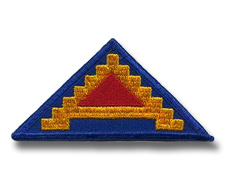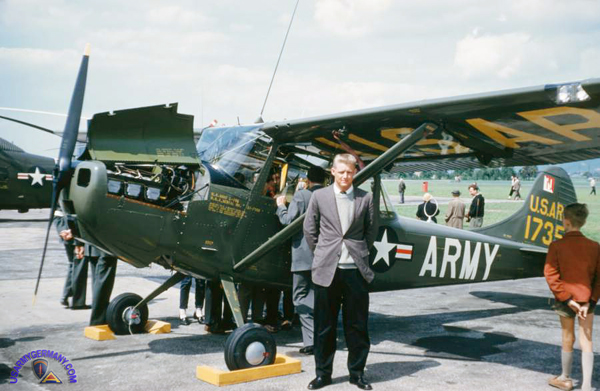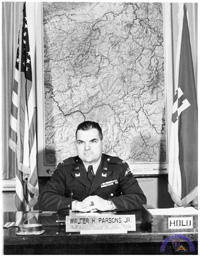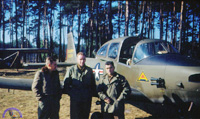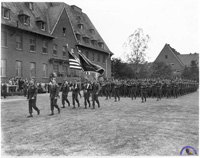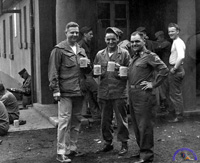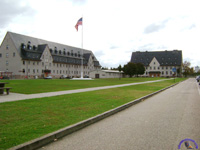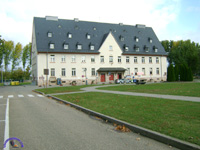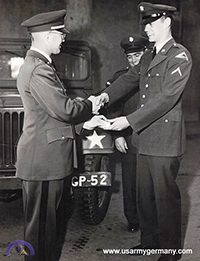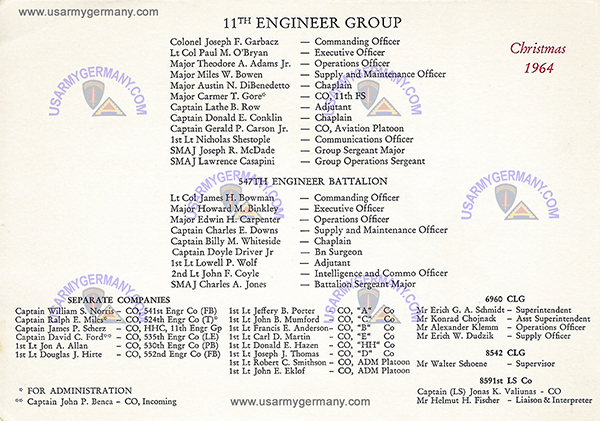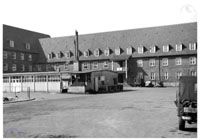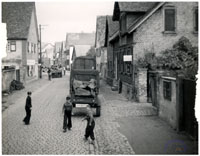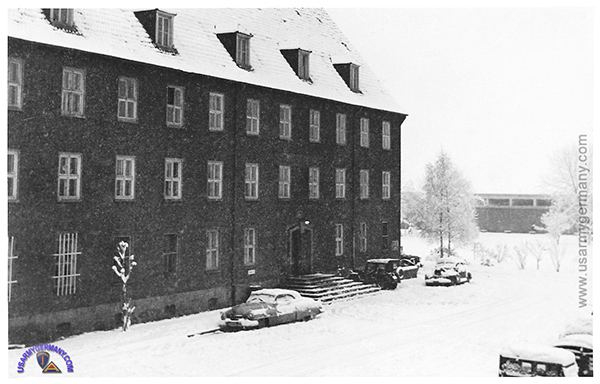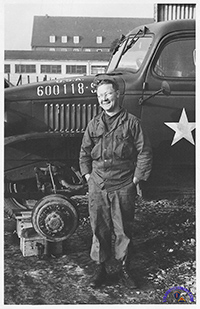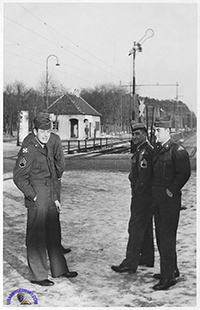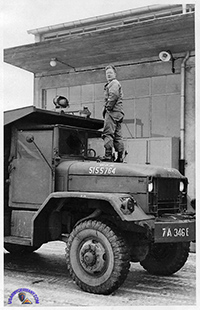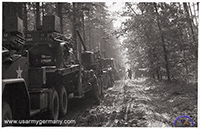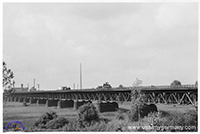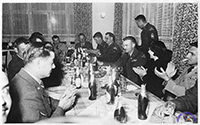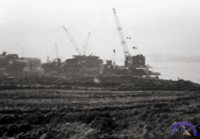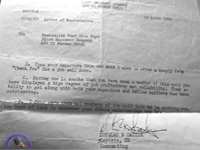| If you do
NOT see the Table of Contents frame to the left of this page, then
Click here to open 'USArmyGermany' frameset |
|||||||||||||||||||||||||||||||||||||||
11th Engineer Group (Combat) |
|||||||||||||||||||||||||||||||||||||||
|
|
|||||||||||||||||||||||||||||||||||||||
|
|||||||||||||||||||||||||||||||||||||||
|
|
|||||||||||||||||||||||||||||||||||||||
| Group History | |||||||||||||||||||||||||||||||||||||||
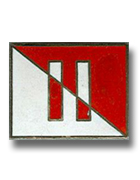 11th Engineer Group DI
11th Engineer Group DI |
|||||||||||||||||||||||||||||||||||||||
| (Source: Annual Historical Report, Seventh Army, 1954) | |||||||||||||||||||||||||||||||||||||||
| ORGANIZATION - 30 June 1954 | |||||||||||||||||||||||||||||||||||||||
|
|||||||||||||||||||||||||||||||||||||||
| (Source: Annual Historical Report, Seventh Army, 1956) | |||||||||||||||||||||||||||||||||||||||
| ORGANIZATION - 30 June 1956 | |||||||||||||||||||||||||||||||||||||||
|
|||||||||||||||||||||||||||||||||||||||
| (Source: Annual Historical Report, 1 Jul 1957-30 Jun 1958, Seventh Army, 1958) | |||||||||||||||||||||||||||||||||||||||
| ORGANIZATION - 30 June 1958 | |||||||||||||||||||||||||||||||||||||||
|
|||||||||||||||||||||||||||||||||||||||
| [1] Source: US Army Station List, 17 April 1957 | |||||||||||||||||||||||||||||||||||||||
| If you have more
information on the history or organization of the 11th Engr Gp, please
contact me |
|||||||||||||||||||||||||||||||||||||||
|
|
|||||||||||||||||||||||||||||||||||||||
| 1951 | |||||||||||||||||||||||||||||||||||||||
| (Source: Email from C.E. Freburg) | |||||||||||||||||||||||||||||||||||||||
| I was among the initial "filler personnel" assigned to the 11th Engineer Group at Tompkins Barracks - but it was about June, of 1951. I wish I could add a great deal to the history of the 11th Engineer Group (Combat) (which was the formal unit designation by the way). It was, after all, over 56 years ago. Some random memories: The first group commander was Lt. Col. Ludlow C. Adams, and he was succeeded by Col. Walter Parsons. The S-1 (my boss for a time), was Captain George Worth. We occupied our time training for a possible confrontation with the Soviets. We were, in fact, out in the field the day Stalin died. Everybody held their breath for a time. It all worked out as we know. |
|||||||||||||||||||||||||||||||||||||||
| 1952 | |||||||||||||||||||||||||||||||||||||||
| (Source: Email from Donald Parsons, son of Col Walter Parsons, former CO of the 11th Engr Gp) | |||||||||||||||||||||||||||||||||||||||
My father, Col. Walter H. Parsons, Jr. [deceased] commanded the 11th during the period July 1952 until about December 1953. |
|||||||||||||||||||||||||||||||||||||||
| 1953 | |||||||||||||||||||||||||||||||||||||||
| (Source: Email from Richard Oldham, HQ 11th Engr Gp, 1953-1955) | |||||||||||||||||||||||||||||||||||||||
| I was in S 3 of the 11th Engineer Group at Tompkins Barracks from Dec.1953 until Feb. 1955. I went on many alerts in that period with many of the companies. I would appreciate any information concerning names and location of any troops associated. I have many stories concerning the selection of alert sites which we were responsible for selection. Several years ago I attempted to provide some information which was a correction to a letter from someone having some information on the floating bridges. The person at that time had a very good letter on the bridges, so I am not criticizing his letter in whole, but simply adding info and correcting others.
11th Group was stationed at Tompkins Barracks, 2 miles west of Schwetzingen and 8 miles from scenic Heidelberg. I was assigned to the 11th Engineering Group in approximately November of 1953 and was there until February 14th 1955. That period was the most interesting of my short army career. I, along with one other person, was assigned as draftsmen in S3. We were assigned to a Capt. Rhett who of course had upward responsibility. S3 at that time had total responsibility for researching all the areas around Schwetzingen that had potential for upcoming "alerts". It was of great interest to have the Sergeant and myself take the jeep and make an inspection of each area with it's positive and negative points. I would then show each area on a map for consideration. We did all the map making for the units within our command area. That was only one of my duties, but was always the most interest, as it allowed me to see many areas of Germany, and record what trees would be damaged or destroyed, in addition to what ground areas the army would damage, and required to pay damage and rental. It always bothered me to know that America was paying Germany so we could develop tactics to defend them against Russia, and for which our boys had fought and died. 11th Group had responsibility for the inspection of Bailey bridges within our area of command. "Floating Bailey" bridges were composed of approximately 60' foot bridge sections which were then supported on pontoons. Those bridge sections were then mechanically joined in sections of a quantity to span the river. Each sections was then supported by large pontoons. Steel cables are mounted at locations upstream of the bridge and run out to the bridge in quantities to withstand the force of the river. "Floating Bailey" bridges are utilized on rivers having a width within the capabilities of the bridge.
For river widths where two sections are needed, or rivers that cannot be blocked due to river traffic, a "Swinging" "Floating" "Bailey" bridge is necessary. The bridge is constructed with two section, one on each river bank, reaching to approximately mid river. During times when the bridge is not in use, one or both sections can be swung into the river shore where they are less vulnerable to discovery and bombing. To be able to overcome the river force when opening or closing, each bridge end has a diesel engine and propeller drive called a "Mule", which withstands the river force while opening or closing the bridge and maintaining each section aligned in mid river while being mechanically joined. Once the two bridge sections are joined, the bridge halves are maintained in position by cables from upstream.
The Bailey bridges were designed, tested and first built by American Army engineers located at Fort Belvoir Virginia. I was with one of the many Engineering companies and worked on some familiarization courses for engineer companies. I know that it was developed by Americans and not Germans as some think.
Memory fades with time and those good memories are now 51 years old. Glad to share times in Germany and accurate details on the Floating Bailey Bridges and "Swinging" "Floating" "Bailey" bridges. I have pictures of Bailey bridges going through all there operations. Unfortunately they are on old 8 mm motion picture cartridges that I have not copied onto DVD's. |
|||||||||||||||||||||||||||||||||||||||
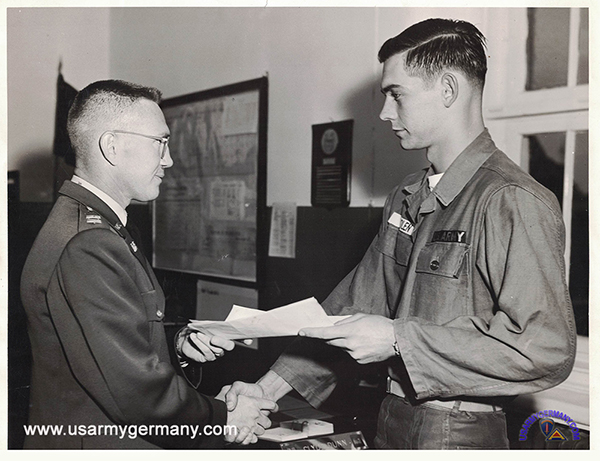 Capt Dunn presents a letter of commendation, Tompkins Barracks |
|||||||||||||||||||||||||||||||||||||||
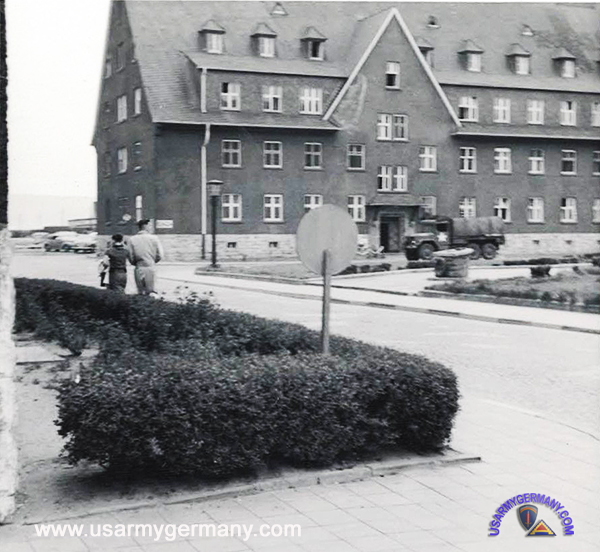 Tompkins Barracks, 1958-59 |
|||||||||||||||||||||||||||||||||||||||
| 1958 | |||||||||||||||||||||||||||||||||||||||
| (Source: Email from Jerry Polen) | |||||||||||||||||||||||||||||||||||||||
| I was there in 1958-59 with Headquarters Company, 11th Engineer Group. Headquarters Company CO was Capt. Clyde Dunn, First Sgt. D L Norris. |
|||||||||||||||||||||||||||||||||||||||
|
|||||||||||||||||||||||||||||||||||||||
| 1959 | |||||||||||||||||||||||||||||||||||||||
| (Source: THE MILITARY ENGINEER, Mar-Apr 1960) | |||||||||||||||||||||||||||||||||||||||
| Class 100
Heavy Raft By Capt C.E. Voss, Corps of Engineers A river crossing on the nuclear battlefield will require multiple crossings on extended frontages, in a continuous movement with no delay for buildup. Bridges will be highly vulnerable. So far, the best and fastest way of crossing a river is by using numerous rafts which may be loaded and unloaded at almost any place on a river bank. |
|||||||||||||||||||||||||||||||||||||||
|
|||||||||||||||||||||||||||||||||||||||
| The rafts are 110 feet long, with superstructure of German Warren Truss type bridging. The roadway width is 14 feet 6 inches, and ramp width is 13 feet 6 inches. I-beam stringers are used, and the decking consists of two layers of 3-inch hardwood planking. Each end of the raft has a 33-foot ramp section which is of Class 60 deck, ramp, and filler panel construction. Ramps are hinged and may be raised or lowered by means of a winch and cable. Tower sections consisting of standard Class 60 cable anchorage towers (10 feet 9½ inches high) with tower cap assemblies, are mounted on each end of the raft and, with the winch and cable assembly, support the ramps (Figure above). | |||||||||||||||||||||||||||||||||||||||
|
|||||||||||||||||||||||||||||||||||||||
| Maintenance of the raft includes periodic checking and starting the Mules and inspecting the winches, cable assemblies, superstructure, and pontons. This requires an estimated 20 man-hours a month. | |||||||||||||||||||||||||||||||||||||||
|
|
|||||||||||||||||||||||||||||||||||||||
| 1961 | |||||||||||||||||||||||||||||||||||||||
| (Source: Email from John R. Carlton) | |||||||||||||||||||||||||||||||||||||||
|
I was stationed in Schwetzingen, Germany at Tompkins Barracks with
the 11th Engr. Group (Hq) as a training
specialist in S-3 Section, from July 1961 until Jan 1962. Prior
to that time I was with the 68th Engr. Co. (Parts
Depot) on the same post from Nov. 1959 until July 1961.
I was there when the Berlin crisis started and was extended for 3 months because of it. I remember the units that were there at the time very well, the float bridge and pontoon bridge outfits, the topographic map outfit, CIA office, Parts Depot, etc. I suppose all those units have long since been deactivated? We were under 7th Army Support Command. I still have pictures of the barracks. I would love to know what happened to these unit. Thanks. Ray Carlton |
|||||||||||||||||||||||||||||||||||||||
| 1962 | |||||||||||||||||||||||||||||||||||||||
| (Source: Email from Charles Brown, HHC, 11th Engr Gp, April 1962-April 1964) | |||||||||||||||||||||||||||||||||||||||
| I was stationed at Tompkins Barracks from Apr 1962 - Apr 1964. I went thru basic at Ft Dix then welding school at APG. I was given orders to report to the 530th, but when I got there they were already over their TO&E for welders. They gave me a cot & bedding, but that's about all. I hung loose for about 2 weeks, then rec'd instructions to report to personnel. When the Sp4 processing me read that I had typing skills, he excused himself, went into the CWO's office. A few minutes later, I got transferred to the HQ Co 11th Engr Gp **(Capt C. E. Voss, Commanding Officer), and ushered to the S4 office.
Major John C. Hix was the S4, and Capt. Vernon T. Diggins was Asst S4. Capt. Diggins (and excellent typist himself), asked me to type a memorandum from a handwritten draft. He was
standing over my shoulder, making me a nervous wreck, but I got through it and became Clerk Typist there. The S4 handled accident and safety reporting. For awhile Capt Diggins cont'd to analyze the data and draft the reports and analyses for me to type. But it wasn't too long before I was doing this and would present a completed report to him. He was a diligent officer and scrutinized the reports fully, but rarely made any changes. I obtained necessary security clearances. This lead to a special assignment. I and Sp4 Earl Wegley (S2 Clerk) were "sequestered" for a time in the S2 Section. We were armed constantly and had our meals delivered to us. No one else but the Section Officer & Section Chief got in the door while we worked on an EDP (Emergency Defense Plan). We had to rifle through data and calculate how much gasoline, diesel fuel, motor oil, etc, would be needed by certain units to get them from point A to point B if the cold war suddenly escalated. I took leave in 1963 and came home to get married. My wife and I went back to Germany to an apartment “on the economy” in Schwetzingen. Since I had high clearance, I had been assigned to the TOC (Tactical Operations Center). If an escalation began, the Group CO and Section Officers moved out to bivouac at a moments notice. From time to time, tests were conducted to evaluate TOC’s readiness. We were back in Germany barely a week. I was on normal duty on post when one of these readiness tests was called. I had to move out immediately, without any way to contact my wife. One of the mechanics from the motor pool was dispatched to my apartment to pick up my gear. My poor wife, although aware of the possibility was beside herself when this E5 whom she had never met knocked on the door and said he had come for my gear. I was gone for a few days. Fortunately, Bill E and his wife lived barely a block away, so she went and stayed with them. Bill was HQ company clerk, so he knew just about everything that went on, so my wife and I could get messages back and forth. Just a note on one TOC incident: I seemed to manage to be the S4 rep one time. I don’t recall why Major Hix and Capt Diggins weren’t out there but here I am, lowly Sp4 Brown, sitting in the TOC van going over numbers with the Group CO, Adjutant, Intelligience Officer, S3 Officer and a 2nd Looie. I can’t remember what section the Looie was with, but whenever the CO wanted anything, he got it for him. One time the CO wanted fresh coffee. He told the Looie “Make sure you take care of Brown, too.” After that my cup was always filled with fresh coffee, a feat I dare say eluded that poor Lt’s sense of humor. A former Post Engineer (German Civilian) owned the house containing our apartment. Because of the time difference, my wife and I were already asleep by the time news of Pres. Kennedy’s assassination hit Europe. The poor landlord was so distraught by this news that I thought he would break our door down trying to wake us to inform us. He was crying almost uncontrollably. Many, many of the townsfolks appeared as incensed and outraged as we were over this heinous crime. The German’s really admired Kennedy! **Capt Voss wrote an article entitled Class 100 Heavy Raft which is on your site. |
|||||||||||||||||||||||||||||||||||||||
| 1963 | |||||||||||||||||||||||||||||||||||||||
| (Source: Email from D. Staples) | |||||||||||||||||||||||||||||||||||||||
| I joined the Army in March of 1963, enlisting in St. Louis, Mo. I was
living in Ferguson,
a suburb north of St. Louis. We left St. Louis by train and traveled to
Fort Polk,
Louisiana.
In May of 1963 I was reassigned to Fort Leonard Wood, Missouri, for AIT. I
was in Co
A, 1st Tng Regt..
In July of 1963 I was assigned to the 535th Engr Co (Lt Equip) and departed
on the USNS
Rose for Bremerhaven, Germany. In August of 1963 I was reassigned to the 552th Engr Co (Float Bridge) in Kaefertal Wald, just outside of Mannheim, Germany. In December of 1963 I was reassigned to Hq Co, 11th Engr Group, in Thompkin Barracks, Schweitzegan, Germany. I returned to the States in February 1966. Again by troop carrier. I suppose the peculiar part of my service was that in the first some 6 months I was assigned and reassigned to three companies in Germany. I never actually set foot on 535th grounds, but was shipped to the 552nd directly from Bremerhaven. While at the 552nd I was assigned to the S-1, training assistant to a Sgt. Allan, and spent my days working up training schedules, and driving a 5-ton bridge truck when on alert. During that time we had several training exercises where we built rafts and a bridge on the Rhein River. The German government at the time would let us close the Rhein for one day a year, usually in the fall. We closed it in October of that year with a reinforced Class 40 float bridge. We were also working out of Camp Bobby R. Thomas with an ARCE training facility where the Army was looking at using a French made Buffalo, a self contained motorized boat/bridge section that would drive on the highway, off into the water, and become one section of a float bridge or raft. In December a Staff Sergeant showed up at the billets with orders for me to move my kit to Schweitziegen, Thompkins Barracks, and become a member of Headquarters Company, 11th Engr Gp. Gathered my kit and drove to an old Panzer Kaserne that had been renamed Thompkins Barracks. The iron hand rails on the stairs still held the cast Swastikas of the Reich, and a painted red cross on the rough, intended, we were told, to prevent the Americans from bombing the site. As it turned out, a PFC named Joe Mezzetti, was looking through the records of the group companies for personnel that could type, and came across my records that announced I could type, but also had a Bachelors Degree in Forestry. At the time the commander of the 11th was Col Joseph F. Garbeaux (spelling may be off), a second generation American whose father had been a Polish resistance fighter, and had joined the US military as a translator/advisor towards the end of the war, and had migrated to the States and became a citizen. Col Garbeaux was looking for staff to use in the S1 and there I was. He also used me at times as his "Forester" when he wanted the Germans to think he had a forester on staff. Our translator at the time was Herr Helmut Fischer, a local German who had been a pilot in W.W.II, but "had never fought against the Americans". I settled in as an S1 clerk working for the Adjutant Captain Lathe B. Rowe, and Sergeant Major John R. McDade. I worked as a clerk/typist, stand by driver for the Colonel, and a general flunky for the SMAJ. In all as good a bunch of men as could be found. During the next two years there were a number of things that stick out in my memory, none are in chronological order. We were on the Rhein supervising a training exercise the day (night in Germany) Kennedy was killed. I was a standby driver for the S2 on this exercise and was ordered to a barracks close by to pick up a "flash" message. This assignment came because of a peculiar situation. As I could type, the S2 needed a typist that could get a secret clearance. I could type, and was pushed into the clearance. Unknown to me, that would lead to a number of interesting trips. I digress. I drove to the barracks and picked up the "flash" message and returned to the training area. In those days, a "flash" message was a prelude to war, or the potential for war. And scared the bejusus out of me. Our training exercise was to end on the following day, but we were held in position for another week until the military could straighten out if Kennedy's assassination was a prelude to war. When we were on such exercises we carried the full TO&E of a combat load. My jeep pulled a trailer that held ammunition and my crew served weapon (3.5 rocket launcher) and other materials. They were not real comforting to look at for that week. But, as the saying goes, all's well that ends well. One of the Units assigned to the 11th Engineers was the 547th Engineer Battalion, in Darmstadt. This was a peculiar unit. It was a nuclear land mine battalion that kept a company on the road, constantly on the move, and shadowed by Soviet SOFA personnel. The battalion was lead by a Lt. Col who would become CO of the Group when Garbauex left in my last year. The battalion carried nuclear land mines in deuce and a halfs for use in the event of war as breaching charges on roads, railroads, and bridges in the famous Hessian Corridor, the route every one expected the Russians to use should they invade West Germany. In one training session I drove the Adjutant and SMAJ behind the Col and his driver to inspect the sites assigned to the 547th in the event of war. The sites were man holes in the roads, bridges and railroads that were nothing but dry wells that would hold either one of our nukies, or a German cheese charge, a large series of blocks of plastic explosives. We found that the man hole covers required an iron bar of specific size and shape to open, and that we had none of those. Shake up occurred after that and 547th went though a shake down to see what else they didn't have. Other times with the Col and SMAJ we would inspect storage areas of materials for use by US forces in the event of war.One such area was the nuclear storage for land mines, and artillery shells. With my Secret Clearance I was allowed to drive to the main gate of the storage facility, and no further. Inside the main gates were three other gates, each requiring very specific orders in order to pass through. In the end, only the Colonel was allowed into the inner ring and was able to inspect the storage area. I was allowed to go into storage areas where there were huge warehouses of barbed wire, PSP, PAP, Bailey Bridge sections, and the other mundane equipment an Engineer outfit would need in war. Once we were in support of an armored training event (may have been Silver Sword, or Shining Sword move up from the States) in Grafenwoehr and Hohensfels. These areas had been used as training areas, I suppose, from the times the Germans used mounted knights as heavy calvary. We were told not to pick up or disturb any ordnance found in the area, but to mark the area with tape and report to the EOD folks to handle. At this time, there was so much ordnance scattered around it was impossible to move without finding American or German materials from the two great wars, and now our peace time occupation. We got a signal one day to send some of our light equipment to a location where a tank had become bogged down in a thicket. When the units showed up, it was found to be a German Tiger tank from W.W.II that was in a revetment that had grown up over the years. The tank was complete, with crew remains, and a blown turret. There was seldom a month that would go by when some left overs from W.W.II would be found, and make the news. Anything from thousand pound bombs, to concealed equipment that had been buried in an attempt to hide it from one army or another during the ebb and flow of combat. One such set up was found down around Munich, when a German contractor unearthed a trench full of US weapons, ammunition, explosives, etc, that had been buried. Another training exercise took us to the Danube River, and a rafting exercise that was education to the outfit. The Danube was full at the time, and running hard. Our boys built the rafts, and promptly sank the boats that were using to maneuver the rafts. It was one of the springs where the weather had been extremely wet, and the ground was soggy. We were constantly pulling equipment out of the mud. One such piece was an armored personnel carrier that sank up to the antennae mounts in mud. We fought weather for two weeks and had less than successful results. One of my favorite assignments was that as Classified Driver. I would drive over much of southern Germany hauling a locked bag of documents. Always under arms, it was a wonderful drive form Schwetzingen to Stuttgart, any time of the year. Those of us making the trip would always find a way of making a day of it and touring as we came around the autobahn. You never knew what you were hauling, or why, but it broke the barracks routine. The units I remember are the 530th, 535th, 552nd, 547th, HHC, and the 24th Engineering Platoon. The last was interesting because it was a full company of mappers. It was on the east side of the Kaserne, out of the way. It was the style of the time to name companies platoons, battalions as companies, etc. One time we got word that there was shock in Congress when some of the Phonies on the Potomac found out that we actually had nuclear arms in Europe. Back to the 24th Engr Platoon. They received photo data from low and high oblique cameras flown by F-4's along the border with the east, as well as, I suppose, the U2 stuff coming down. They were constantly updating maps for the military in the area. One of the guys I hung with was Jan Haluska, son of a printer in San Francisco. We had the chance to tour part of the 24th, for what ever reason, and Jan explained some of the printing equipment that was there. High speed presses and such. I was always amused by the slight of hand, the left hand not knowing what the right hand was doing, in the military of that time and that place. Always trying to keep Congress and the east block off balance. I often wondered if we ever confused anyone but ourselves. The S4 at the time was run by WO "Chief" Aurbach, a crusty old warrant officer that took care of his "kids". One of his kids was a friend of Joe Mezzetti, a name that escapes me know, who handled the records and assignment of troops for rotation back to the states. I made him a standing offer of one dollar a day for each early day out of Europe he could get me, I left 21 days ahead of schedule and paid him off at the Bahnhof in Heidleburg, where we all promptly got drunk. I was poured on a train to Bremerhaven, where the next morning we loaded up on a troop carrier and started home. I left an E-5, assigned to the 535th Engr Company, during all the time at the HHC, I was carried on the books of the 535th for pay, and records. It was a matter of convenience for the group at that time to keep the HHC at TO&E levels, but to still have enough TDY folks to make it all work. So I guess I was TDY for almost 2 years. |
|||||||||||||||||||||||||||||||||||||||
| CORRECTION (Source: Email from Jon Bacon, Co C, 547th Engr Bn, 1960-62) The 547th Engineer Combat Battalion ("Bridge Builders") was NOT a nuclear land mine battalion. The battalion was a bridge building battalion, not a land mine battalion. Although they have been known to clean up minefields and build wooden cases for maps and a lot of other details beside bridging. Each company had it's specialized duties and equipment.
An ADM (Atomic Demolition Munitions) platoon was a platoon of the Battalion. i.e.: ADM Platoon, HHC, 547th Engr Bn, Darmstadt.
|
|||||||||||||||||||||||||||||||||||||||
| 1964 | |||||||||||||||||||||||||||||||||||||||
|
|
|||||||||||||||||||||||||||||||||||||||
| 20th Engineer Combat Battalion (Army) | |||||||||||||||||||||||||||||||||||||||
| 1961 - 1963 | |||||||||||||||||||||||||||||||||||||||
| (Source: 20th Engineer Battalion website - http://www.20thengineerbattalion.org/) | |||||||||||||||||||||||||||||||||||||||
| BERLIN CRISIS
On 1 October 1961, the 20th Engineer Battalion was alerted for deployment to West Germany during the Berlin Crisis. The Battalion, minus Companies B and C, was attached to the 11th Engineer Group in Germany. Headquarters and Headquarters Company was located at Giessen, while Company A was attached to the Berlin Brigade. The mission of the 20th was to provide combat engineering in the defense of Europe. While in Germany, the 20th participated in a Battalion ATT and two Seventh Army FTXs (Exercise Grand Slam and Exercise Fallex). On 15 March 1963, by General Order Number 13 from Seventh Army, the following provisional redesignations took effect: Company D, 547th Engineer Battalion became Company D, 20th Engineer Battalion; Company E, 547th Engineer Battalion became Company E, 20th Engineer Battalion; and Company D, 299th Engineer Battalion became Company F, 20th Engineer Battalion. Companies D and F and HHC were headquartered at River Barracks, Giessen, Germany, and Company E was stationed at Taylor Barracks, Mannheim, Germany. Headquarters and Headquarters Company returned to Fort Devens in September 1963. Company A was reconstituted at Fort Devens and Headquarters assumed control of the line companies, including B and C, in September 1963. CORRECTION (Source: Jon Bacon) I exchanged e-mail with Col Charles (Bill) Solliday who had been in the 20th Eng Bn and transferred to 547th when 20th rotated to Fort Devons, Mass (December 1963). He said Co D and E returned to the 547th prior to 20th rotating. |
|||||||||||||||||||||||||||||||||||||||
|
|
|||||||||||||||||||||||||||||||||||||||
| 109th Engineer Combat Battalion | |||||||||||||||||||||||||||||||||||||||
| 1951 | |||||||||||||||||||||||||||||||||||||||
| (Source: Comments found in a post on the 109th Engineer Combat Battalion Page, Korean War Project website) | |||||||||||||||||||||||||||||||||||||||
| The 109th Engr Cbt Bn underwent advanced unit training at Fort Bragg. After attaining a full complement of trained soldiers filling the unit to 100% strength, the unit completed intensive battalion level training and was directed to prepare for deployment. The overseas movement alert came on May 15, 1951; the unit departed the United States on June 15, 1951, and arrived in Bremerhaven, Germany on June 29, 1951. The next day they traveled by train to Mannheim, West Germany.
The Battalion was quartered in Taylor Barracks where they were to spend most of the next year. They were assigned to the 11th Engineer Group and the 7th U.S. Army. The 109th Engineer Battalion was in charge of nine (9) bridges over the Rhine river. These bridges were of unique design. They were the standard Army M2 Bailey Bridges mounted on the M4 floating metal pontoons, with half of the bridge on each side of the river. The bridge halves would swing from each side of the river and when they met in the middle of the river they were fastened together with huge steel pins. It took the super-sized Army Brockway Trucks to handle the one and a half inch cable required to swing the bridges. Each line company was in charge of three bridges that were spaced at various distances along the Rhine, some as far as 30 miles apart. A veteran recalls the importance of the mission along the Rhine: when the alerts were sounded, the only traffic allowed on the German highways was the 109th Battalion. The battalion had two missions: one was to swing the nine bridges into place, or the second and worst-case scenario, to destroy all the bridges across the Rhein in case of a Soviet invasion. |
|||||||||||||||||||||||||||||||||||||||
| (Source: Stars & Stripes, European edition, Friday, Aptil 16, 1954) | |||||||||||||||||||||||||||||||||||||||
| Bridge across the Rhine River (photos) Photos by Leigh Wiener, S&S |
|||||||||||||||||||||||||||||||||||||||
| (Source: Author's collection) | |||||||||||||||||||||||||||||||||||||||
|
|||||||||||||||||||||||||||||||||||||||
| (Source: Official website of the 37th Engineer Battalion (Cbt)(Abn)) | |||||||||||||||||||||||||||||||||||||||
| On 28 October 1954, the 37th Engineer Battalion was redesignated the 37th Engineer Battalion (Combat) and activated on 17 December 1954 in Germany. (Webmaster Note: This battalion was located at Taylor Barracks, Mannheim-Käfertal where the 109th was originally located and then inactivated. I am going to assume that the 37th replaced the 109th as the latter was inactivated to be returned to the control of the National Guard. Comments anyone?) The battalion was later deactivated on 31 December 1958 in Germany. |
|||||||||||||||||||||||||||||||||||||||
| 346th Engineer Company (Light Equipment) | |||||||||||||||||||||||||||||||||||||||
| 1951 | |||||||||||||||||||||||||||||||||||||||
| (Source: STARS & STRIPES, Aug 28, 1951) | |||||||||||||||||||||||||||||||||||||||
| The 346th Engineer Light Equipment Company celebrated its first anniversary of active duty with a Southern-style barbecue supper in the company area at Grafenwoehr. Webmaster note: The 346th was an Army Reserve unit originally from Salisbury, North Carolina. |
|||||||||||||||||||||||||||||||||||||||
| (Source: Email from Luke Basham, grandson of Joseph S. May, Jr., 346th Engr Lt Equip Co) | |||||||||||||||||||||||||||||||||||||||
| I recently have been going through some things that my mom gave me several years ago after my granddad past away. I knew he was in the Army and stationed in Germany in the 1950s, but not much more. Based on the docs I have, I now know he was in the 346th Engr Lt Equip Co in the early ‘50s. I found some documents he had saved and really don’t know what to do with it. I’m currently in USAF and would like to make sure I can pass these along so they are useful to others. |
|||||||||||||||||||||||||||||||||||||||
|
|||||||||||||||||||||||||||||||||||||||
| 1953 | |||||||||||||||||||||||||||||||||||||||
| (Source: STARS & STRIPES, Sept 8, 1953) | |||||||||||||||||||||||||||||||||||||||
| The 346th Engr Light Equip Co has been named Outstanding Company for July 1953 by 11th Engr (C) Group Headquarters. | |||||||||||||||||||||||||||||||||||||||
| 1954 | |||||||||||||||||||||||||||||||||||||||
| (Source: STARS & STRIPES, Aug 30, 1954) | |||||||||||||||||||||||||||||||||||||||
| Five men from the 346th Engr Light Equip Co have constructed a road that connects the two towns of Weinheim (near Mannheim) and Brooklina (?). With the construction of the new road they replaced a rutted, winding trail of 17 kilometers that served previously as the only route between the two towns (only four kilometers apart). The construction party consisted of: During the construction project, the five soldiers were fed and housed by the town of Brooklina. At the completion of the project, a party was given for the five soldiers by the townspeople and a painting of a portion of the road was presented to the company. CO of the 346th is Capt George J. Sells. |
|||||||||||||||||||||||||||||||||||||||
| (Source: STARS & STRIPES, Nov 12, 1954) | |||||||||||||||||||||||||||||||||||||||
| STARS & STRIPES published a list of 25 Army Reserve and National Guard units serving in USAREUR that will have had their colors returned to the US by December 1. All of these units are being replaced by Regular Army units. Webmaster note: The 346th Engr Lt Equip Co was on this list. It would be replaced by the 535th Engr Lt Equip Co. For more on the 535th Engineer Company, click here |
|||||||||||||||||||||||||||||||||||||||
| 530th Engineer Company (Panel Bridge) | |||||||||||||||||||||||||||||||||||||||
 530th Engr Co DUI
530th Engr Co DUI |
|||||||||||||||||||||||||||||||||||||||
|
|
|||||||||||||||||||||||||||||||||||||||
| 541st Engineer Company (Float Bridge) | |||||||||||||||||||||||||||||||||||||||
| 1954 | |||||||||||||||||||||||||||||||||||||||
 541st Engr Co DUI (?)
541st Engr Co DUI (?) |
|||||||||||||||||||||||||||||||||||||||
| (Source: Email from Bruce Garnett, 541st Eng Co) | |||||||||||||||||||||||||||||||||||||||
| Some thoughts on service with the 541st Float Bridge. With three other mid-western draftees I reached Mannheim, Germany in Oct. 1954, assigned to the 139th Float Bridge. About three weeks later we were transferred to Schwetzingen, Tompkins Barracks. In Dec. 1954 we retired the flag of the 139th and received the flag of the 541st. This had something to do with the change from an army of occupation to a guest army, or member of US Army Europe. We had the Class 60 Float bridge, it was on Rubber inner tubes type of construction. Once each month we went to Darmstadt or some place on the Rhine and put the bridge up, closing the Rhine to commercial traffic for about an hour on Sunday Afternoon. We also had a foot bridge, and yearly put it up in some short amount of time to give us the world's record in time. We were totally integrated, but surprisingly had a black commanding officer, they were uncommon at that time, he really wanted to be a career Master Sergeant, but through field commission in Korea and accidents in Germany wound up a Captain. Several of the Lt.'s were from the south and had problems working for a black. I left in Dec. 1955, kept in touch with a friend, Borklund, who went through a tough time when the Captain was transferred, the new Lt. was going to make an impression on Top Brass, worked the company 60 hours a week, eventually the IG moved the CO out. I wound up as Dispatcher. A friend, Holanda, was in Supply; another friend, Hovden, was in the Tool Room Truck. A Great Experience, gave me a trip through Europe and paid for my Engineering Degree at Wisconsin. |
|||||||||||||||||||||||||||||||||||||||
| 1962 | |||||||||||||||||||||||||||||||||||||||
| (Source: Email from James Johnston, 541st Eng Co) | |||||||||||||||||||||||||||||||||||||||
| I was stationed
at Tompkins Barracks from January 1962 until July 1964. I was assigned
to 541 Engineer Company (Float Bridge).
About half way of my tour they transferred me to supply where I was
a Clerk Typist Supply Clerk. I drove a bridge truck and supported
combat engineers building the bridge. We built bridges all over Germany.
After I went to supply I didn't have to go to the field as often.
We had a GI inspection of our company while I was in supply, I helped
all the parts of the company with what they needed and the company
passed with flying colors. To this day I still write letters and receive letters from the Mess Sergeant who lives in Youngstown, Ohio. I wonder a lot if 541 is still there. I had lots of friends there and wonder sometimes if they are still around. If someone can tell me if they are still there or not I would appreciate it. I know they had the best beer in the world there. I came back to the states and processed out at Fort Hamilton, New York. On my way home to Rome, Georgia I had a lay over in Washington, DC. I went into a bar and bought a beer, after drinking German beer for so long I only drink about half of it and to this day I don't drink american beer. James Johnston |
|||||||||||||||||||||||||||||||||||||||
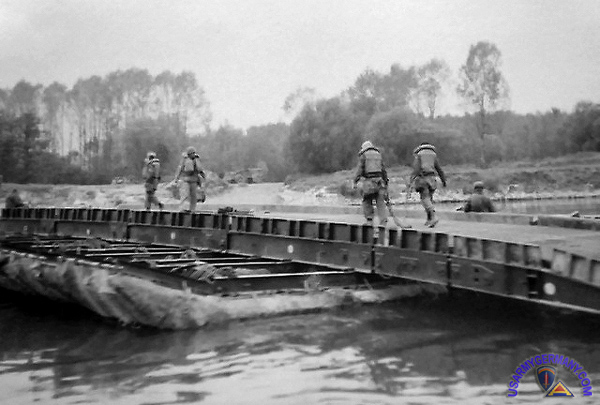 541st Engr Co during one of its numerous bridging exercises |
|||||||||||||||||||||||||||||||||||||||
 541st Engr Co motor park at Tompkins Barracks |
|||||||||||||||||||||||||||||||||||||||
| 1965 | |||||||||||||||||||||||||||||||||||||||
| (Source: Email from Otto Boyd, 541st Engr Co (FB), 1965-66) | |||||||||||||||||||||||||||||||||||||||
| I was in the 541st Eng Co. F.B. in 1965-66 living in Tompkins Bks. in Schwetzingen. Spent many days and nights on the Rhine River. Would like to hear from anyone that served at this time.
I arrived at 541st Eng. (FB) Jan. of 1965. I was there for 14 months. Had to leave early because my step father passed away in March of 1966. I think I would have reinlisted if that would have not happened. I know, I could have still have done it, but I had the chance to come home and I took it. |
|||||||||||||||||||||||||||||||||||||||
|
|||||||||||||||||||||||||||||||||||||||
| 1975 | |||||||||||||||||||||||||||||||||||||||
| (Source: Email from David C. Stott) | |||||||||||||||||||||||||||||||||||||||
| When I arrived at Tompkins Barracks in May of 1975 we were a Float Bridge Company. We transitioned to Mobile Assault Bridge Co sometime in 1976. We were located near MILPERCEN - between Heidelberg and Mannheim Germany. I was HQ and have many stories. V Corps 18th MP Brigade was stationed out of Mannheim, Germany. When I was stationed in Europe in the 1970’s my unit was a couple miles from Mannheim. In fact we had a couple of riots/fights between my Unit (541st Engr Co @ Tompkins Barracks) and members of the 18th Brigade. We totally trashed 2 MP cars (Ford Maverick) on our compound in 1974 or 75. After that the MP’s refused to respond to our barracks unless in force. I was in V Corps, 130th Brigade, 549th BN, 541st Engr, 2nd PLT, 2nd Squad, Detailed to BN HQ, Attached at Co HQ. In 1976 we had what was termed a “race riot” at Tompkins Barracks. Only 6 to 10 soldiers were involved. MP’s arrived “in force”. C.I.D. investigated very heavy the following days. I opened my door during the riot and have a 1/2 gallon bottle of Jim Beam break outside my door. I locked it so I didn’t have to give testimony. Soldiers participating were reamed, disciplined and scattered to other 130th Brigade Engineer units. The rest of us were in race relation classes the rest of the year. Army made it clear that was enough of that CRAP. Also in 1976 we had a huge “mini October Fest” in Patrick Henry Village. This was a major “dependants community”. It was famous all over the theater for it’s American Ice Cream - and good beer. (Great Combo). A drunk redhead from my unit, climbed the tent support frames, to the top to get some kids balloons that floated up. He lost strength and fell on a “beer table”. Balloons did not break the fall. MP’s out of Mannheim / Heidelberg showed up with a Police Dog. Our soldier, drunk out of his mind, focused on the Dog as he got up. Seeing it was “MP” dog he grabbed it on the back and viciously bit it. Near riot. The dog got “shots” and treatment. Our Company Commander had to pick up the soldier in “jail” . The MP sergeant referred to his soldiers as “animals”. Captain Gaston E. Rouse fired up the whole MP house. Yelling and carrying on! We were known as the “animals” after that. |
|||||||||||||||||||||||||||||||||||||||
|
|
|||||||||||||||||||||||||||||||||||||||
| 552nd Engineer Company (Float Bridge) | |||||||||||||||||||||||||||||||||||||||
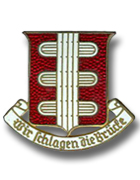 552nd Engr Co DI (probably 1950s) 552nd Engr Co DI (probably 1950s) 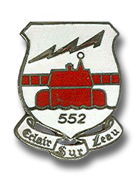 552nd Engr Co DI (probably 1960s) 552nd Engr Co DI (probably 1960s) |
|||||||||||||||||||||||||||||||||||||||
| 1954 | |||||||||||||||||||||||||||||||||||||||
| (Source: Email from Marv Christensen, 552nd Eng Co (PB)) | |||||||||||||||||||||||||||||||||||||||
I was assigned to the 552nd Engr Company in Darmstadt (Kelly Barracks) in late 1954. The company was involved in cleaning up rubble left over from the "big war" in Darmstadt, Griesheim, Eberstadt, and other small communities in the Darmstadt/Frankfurt area.
After stints as a "bridge specialist" driving a ponton bridge truck - and an accident smashing my hand on a Rhine river build exercise - I was assigned to S4 in the motor pool. Shortly after that, I was assigned (early 1955) to H&HQ Company at 11th Engr Group in Schwetzingen where I served as the company clerk. Names may escape me but I remember Lt Jack Dirla and Lt William Cahill and Capt Silver as CO's - and Msgt Schneider and Msgt Fulch who were my immediate bosses. My time at 11th grp HQ was great! Many good times in Heidelberg, the NCO club across the highway, and Schwetzingen. Field exercises (about once a month) took us to fields and bivouac areas all over central and southern Germany - most were dry runs but we did oversee bridge exercises for 552, 547, and 541 along the Rhine. I left Schwetzingen in August 1957 and returned to Iowa. I don't very often think about my time in Germany and have long since lost track of my buddies (Tom Breen from Chicago, Gus Silbernagel from Minnesota, and Chuck Milner from Council Bluffs, Iowa). However, my wife and I did some touring in the late 1970's in Germany and I returned to both Kelly and Tompkins Barracks. So much had changed that it was barely recognizable to me. Did find a couple of my favorite "beer halls" and some gasthouses we frequented nearly a quarter century earlier. We spent a few days in Heidelberg and visited the place I thought was USAREUR Hq in the 1950's. |
|||||||||||||||||||||||||||||||||||||||
| 1960 | |||||||||||||||||||||||||||||||||||||||
| (Source: Email from W. J. Bither) | |||||||||||||||||||||||||||||||||||||||
| I was a 2nd Lt assigned to the 552nd Float Bridge Co. at Taylor Barracks near Mannheim. The company was testing new amphibious bridging that was built by the French. While I was there we turned in for storage our M4T6 bridging and trucks.
We supported several units in river crossings that were trying out the new equipment. Our CO was Capt.Bernard C. McGovern. The 11th Grp Commander was Col. Kelley. I was with the 552 from Feb 1960 to Dec 1960. At that time I was assigned to Company C of the 547th Combat Engineer Battalion in Darmstadt until Aug 1961. On the way to Bremerhaven I saw a infantry unit from Coleman Barracks in the British Zone near Hanover and thought it was unusal. When I returned to the unit I found out they had been sent to Berlin as the wall was being erected. Also they said I might be extended for 6 months. However I was allowed to get out. For the record, the 547th had Hq, A, B, and C companies in Kelly Barracks in Darmstadt. Companies D and E were at Taylor Barracks near Mannheim. I would like to hear from anyone in those units at that time. Also what happened to those units later on. |
|||||||||||||||||||||||||||||||||||||||
| Related Links: HHC, 11th Engr Gp, Tompkins Bks, Schwetzingen BROKEN LINK - Club Photo Album "Europe, I (1958-1960)" by a veteran of the 11th Engr Gp with several great pics of Tompkins and the Schwetzingen area. |
|||||||||||||||||||||||||||||||||||||||
